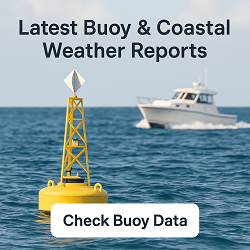Yulee, FL Weather Forecast and Current Conditions
Current Conditions From Nearby Local Station

Feels Like 48°F
at
Point Forecast at a Glance







7-Day Temperature Trend
Week Ahead Summary
High temperatures remain relatively stable through the week, ranging from 73°F to 79°F. Dry weather expected throughout the week.
Climate Context
This week's forecast shows temperatures running 5°F above the historical average for November. Normal highs for this period are around 72°F with lows around 54°F.
This Date in Weather History
1974 - A storm produced 15 inches of snow at the Buffalo, NY, airport, and 30 inches on the south shore of Lake Erie.
Yulee, FL 7 Day Weather Forecast Details
Friday Nov 14

Night: Patchy fog before 1am, then patchy fog after 2am. Otherwise, partly cloudy, with a low around 48. Calm wind.
Saturday Nov 15

Day: Areas of fog before 10am. Otherwise, partly sunny, then gradually becoming sunny, with a high near 76. Light west wind.

Night: Patchy fog after 5am. Otherwise, mostly clear, with a low around 54. Calm wind becoming west around 6 mph in the evening.
Sunday Nov 16

Day: Patchy fog between 7am and 9am. Otherwise, sunny, with a high near 78. West wind 6 to 13 mph, with gusts as high as 18 mph.

Night: Partly cloudy, with a low around 57. West wind 3 to 5 mph.
Monday Nov 17

Day: Sunny, with a high near 73.

Night: Mostly clear, with a low around 56.
Tuesday Nov 18

Day: Sunny, with a high near 77.

Night: Mostly clear, with a low around 56.
Wednesday Nov 19

Day: Sunny, with a high near 79.

Night: Partly cloudy, with a low around 58.
Thursday Nov 20

Day: Mostly sunny, with a high near 78.

Night: Mostly cloudy, with a low around 60.
Friday Nov 21

Day: Mostly sunny, with a high near 79.
About Yulee, FL
Content from Wikipedia, licensed under CC BY-SA 3.0.
How We Provide Better Local Weather
Current conditions: We use the nearest available station to your location - including professional MESONET/MADIS and local weather stations - often miles closer than regional airports.
Forecasts: National Weather Service point forecasts predict for your specific area, not broad regional zones, making them far more relevant to your location.



